
About This Quiz
Thousands of parts make up a modern automobile, and these parts range from the tiniest of screws to large components, like an engine block. Having a basic idea of how the parts connect is essential for both mechanics and DIY weekend warriors. Many parts have more than just one connection point, and connecting them in the wrong way can cause severe damage to the vehicle, especially when dealing with electrical components.Â
Whether you're dealing with a cylinder head or a delicate fuel line, knowing where these parts connect is crucial for repairing and maintaining a car. Connecting them incorrectly means you could find yourself stranded on the side of the road after you thought you fixed the issue.
Do people tell you you're mechanically inclined? Do you think you know what every car part connects to? Find out if you know as much as you think you do by taking this car part quiz. Make sure to share it with your friends to see who can brag that they know the most about vehicles.Â
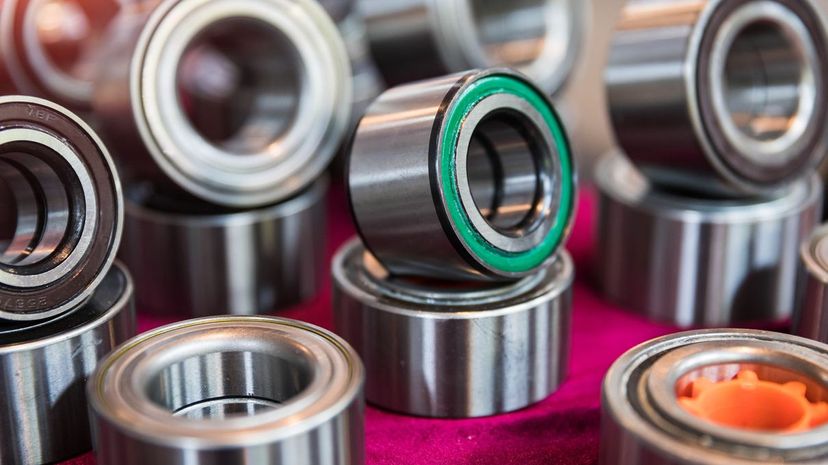
The wheel bearing provides the smooth movement needed between the wheel hub and knuckle. This circular bearing sits between the wheel hub and knuckle to make the wheels rotate easily and friction-free.
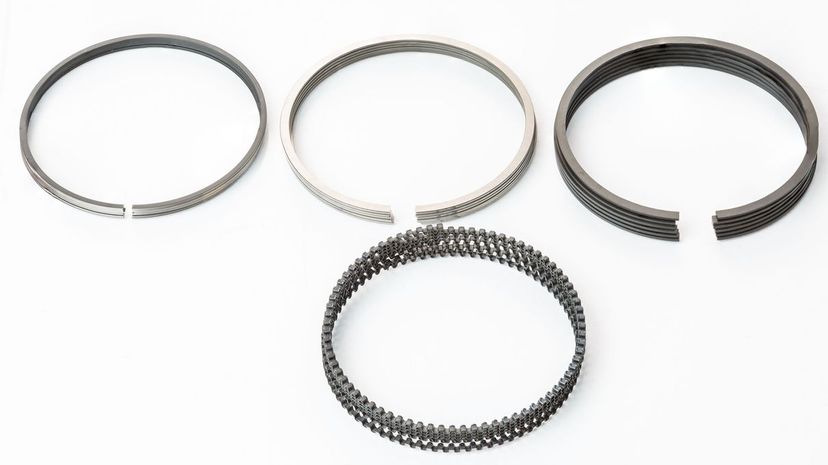
The piston rings snap into small grooves in each piston. They prevent fuel from dripping out of the cylinder and into the oil and hold the compression caused by internal combustion in the cylinder, which gives the engine the power to move the vehicle.
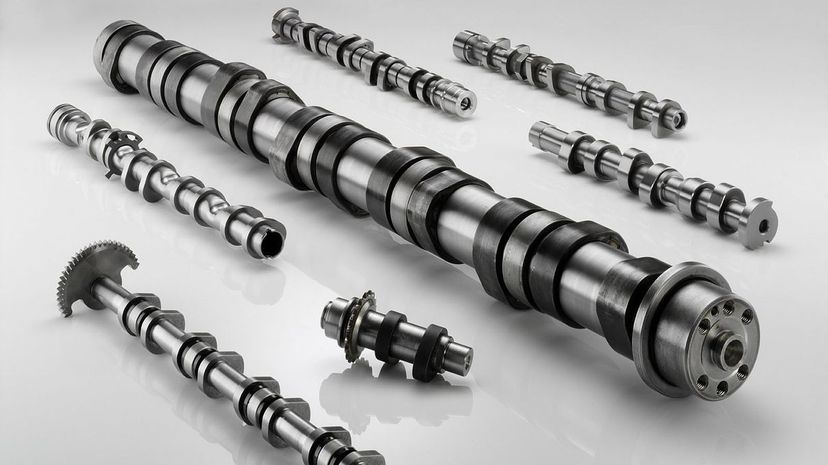
The camshaft or camshafts sit inside the engine block of in the cylinder head, but their mechanical connection is to the timing assembly, be it a belt, chain or series of gears. This timing assembly spins the camshaft, which opens and closes the exhaust and intake valves in the correct timing.
Advertisement
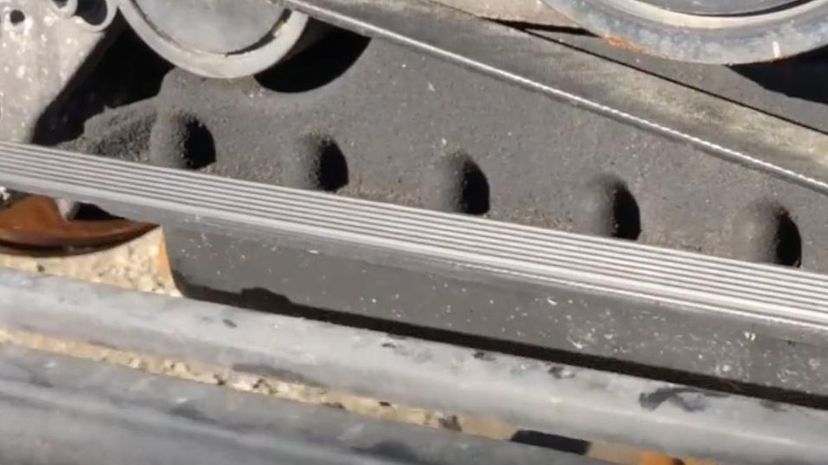
The serpentine belt transfers the engine's power to the vehicle's various accessory systems, like air conditioning, power steering, the alternator and more. If this belt breaks, one or more of these systems will stop working.
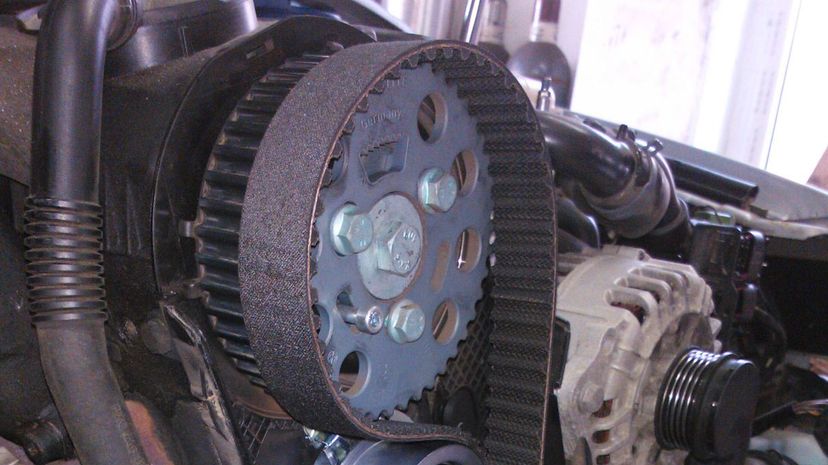
The timing belt or chain connects to a series of pulleys or sprockets that keep the entire engine in the correct timing. They synchronize the crankshaft, water pump and valves with the electronic ignition components.
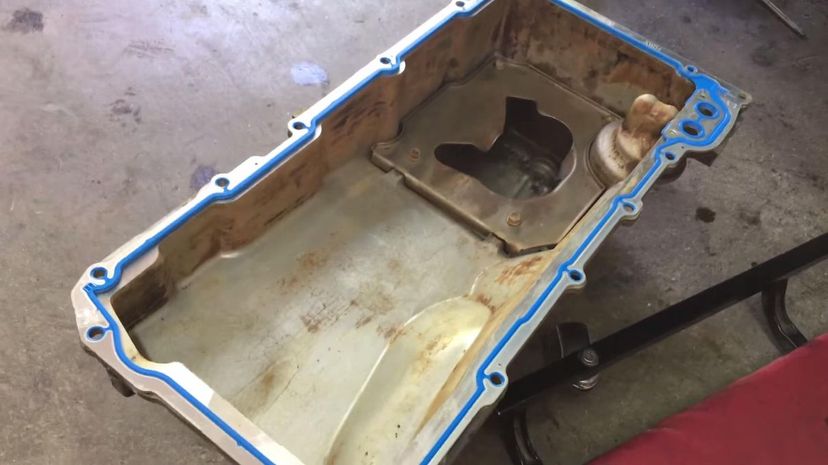
The engine oil pan bolts to the bottom of the engine and holds all the oil the engine requires. Its placement is the reason why it is so important to not hit speed bumps too fast, as this can cause the car to "bottom out" and damage the pan.
Advertisement
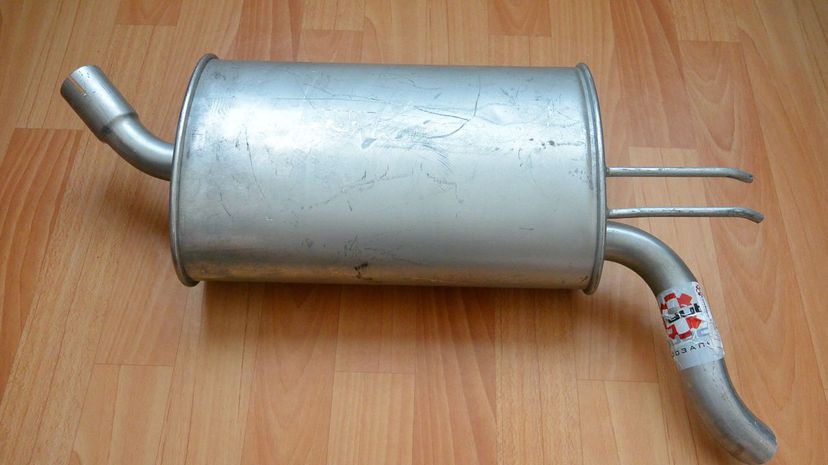
While its exact position varies by vehicle, the muffler always connects to the exhaust system at some point. The muffler helps keep noise to a minimum.

The alternator uses a bracket to mount it to the front of the engine. This aligns it with the crankshaft pulley and allows a serpentine belt to transfer the engine's power to it.
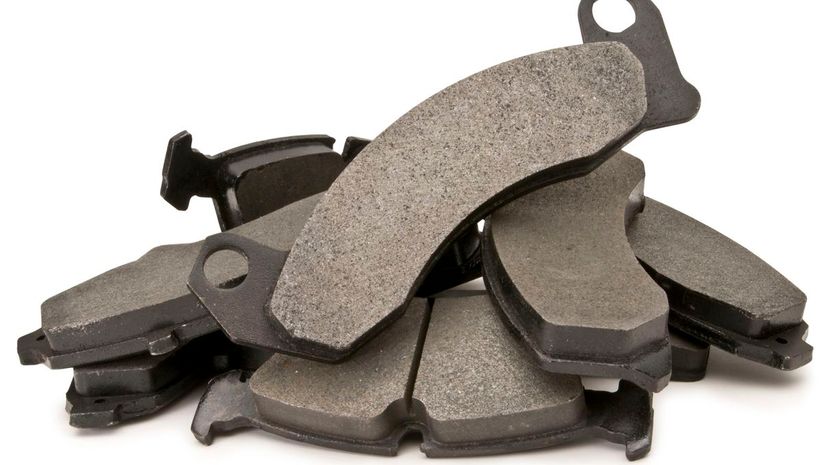
The brake pads contact several components in normal operation. They sit within the brake caliper bracket and are held in place by the brake caliper. When the caliper squeezes the pads, they contact the rotors to stop the vehicle.
Advertisement
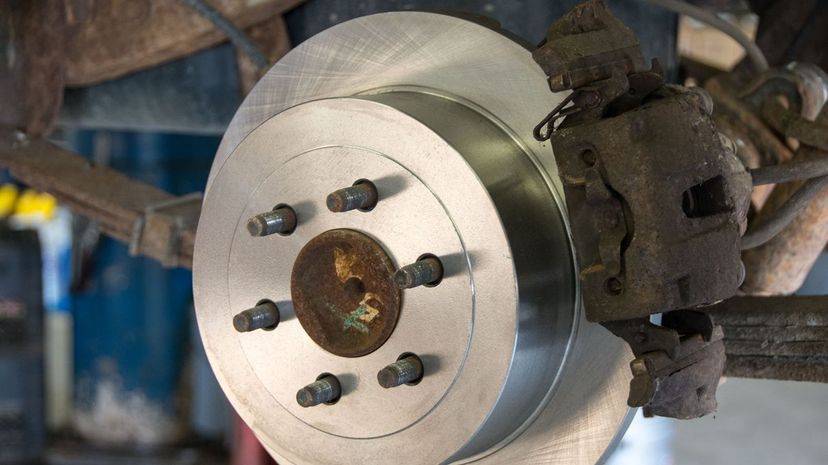
The brake rotor connects to the wheel hub, typically via a small screw. Over time, the heat caused by braking can create a strong bond between the hub and rotor, forcing you to hit the rotor with a mallet to free it.

The rear differential cover connects to the differential housing to protect the rear differential from dirt. This cover also keeps the differential oil in place and lubricates the moving parts.

The oil drain plug screws into one of the lowest parts of the oil pan. Unscrewing this plug allows you to drain the oil for an oil change.
Advertisement
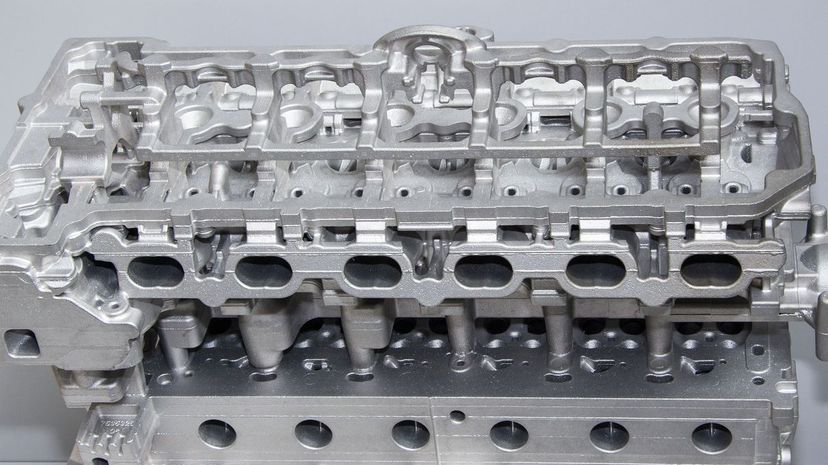
The cylinder head sits on top of the engine block, directly above the pistons. It houses the exhaust and intake valves, and in some engines, the camshafts.
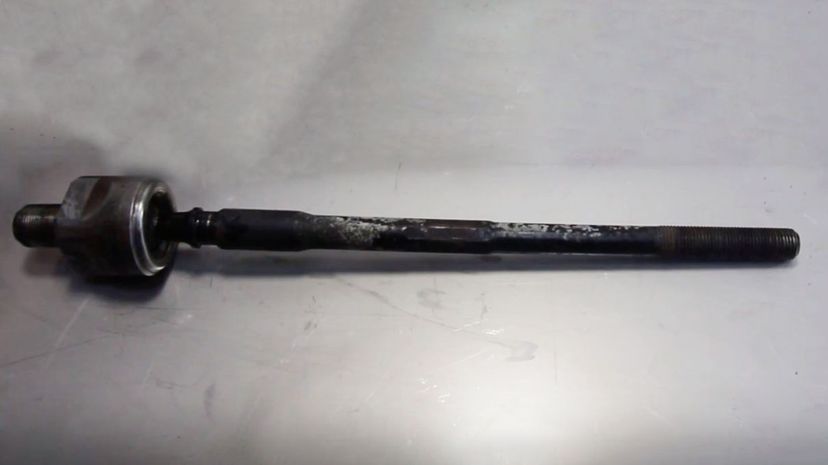
The inner tie-rod end is the connection point between the steering rack and the outer tie-rod end. These components not only allow flexibility, but also allow you to fine-tune the alignment by twisting them.
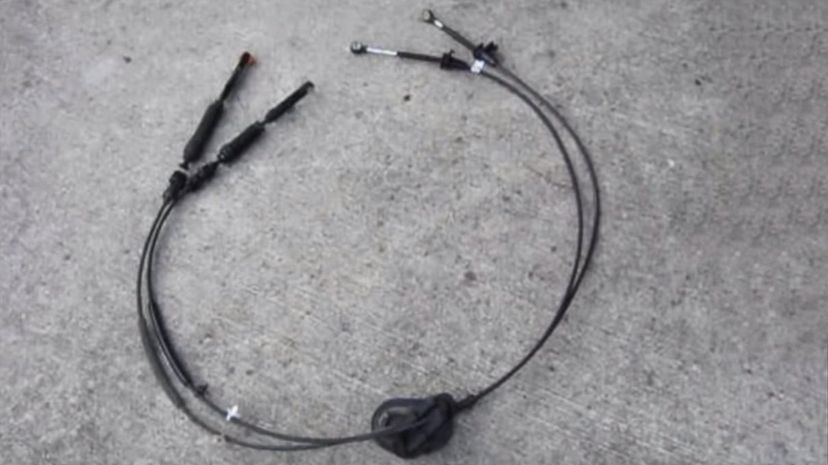
The transmission shift linkage is the mechanical connection between the transmission and gear shifter. It transmits the gear you choose inside the vehicle to the transmission. In some modern cars, manufacturers replaced this mechanical connection with an electric one.
Advertisement

The transmission connects to the rear of the engine via the flywheel or flexplate. It transfers the power from the engine to the wheels.
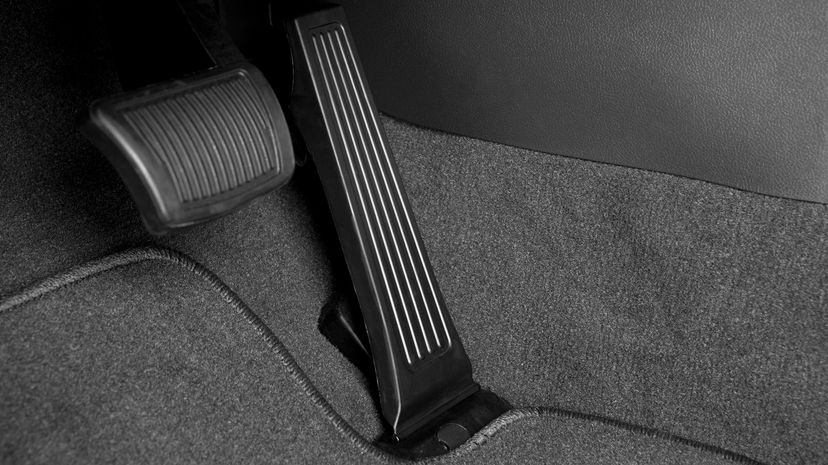
The accelerator pedal delivers the driver's desired power to the engine via a mechanical or electrical connection. In mechanical setups, the accelerator pedal attaches to an accelerator cable to deliver this input. In newer vehicles, a sensor is used to deliver it.
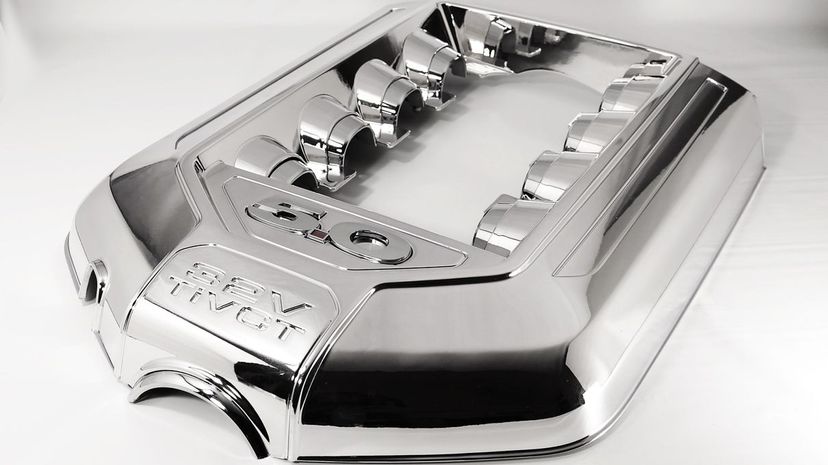
The valve cover acts as the shield for the top of the cylinder head. It prevents debris from getting into the moving parts and keeps the oil contained in the cylinder head.
Advertisement
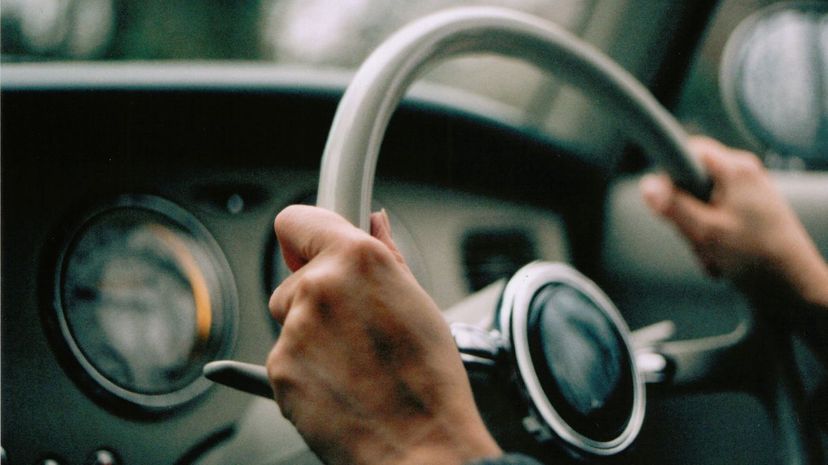
The steering column transfers the steering wheel input to the steering rack. This is what turns the wheels in the direction in which you turn the steering wheel.
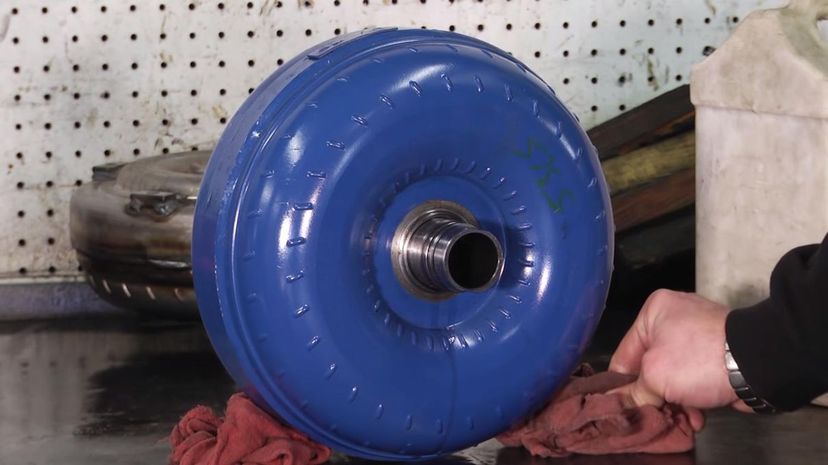
The torque converter connects to the engine flexplate and the transmission input shaft to transfer power from the engine to the transmission. The torque converter goes into a lockup mode at highway cruising speeds.
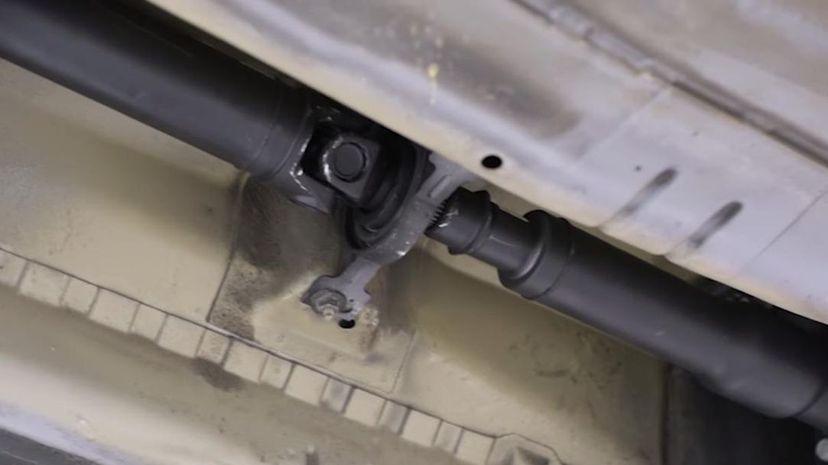
The drive shaft connects the transmission to the rear differential. It connects to both the transmission and rear differential to transfer power. In some sports cars, this shaft transfers power from the engine to a rear-mounted transmission.
Advertisement
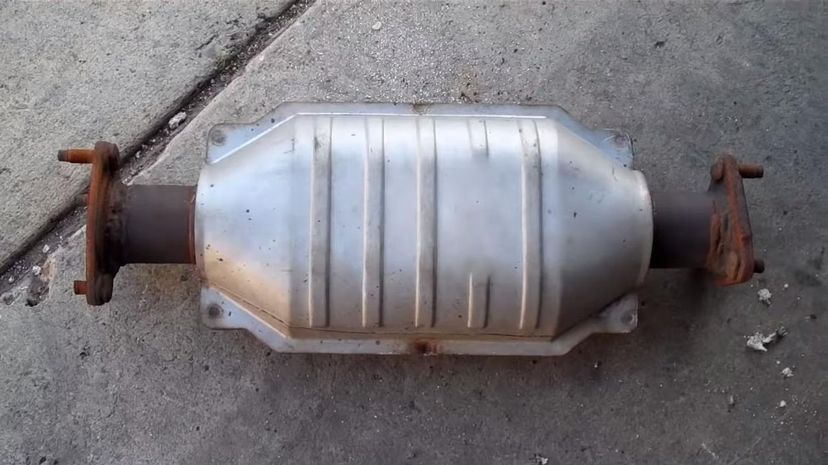
The catalytic converter connects to the exhaust system, but its exact positioning varies by vehicle. This component converts all the toxins in the exhaust into less harmful fumes.
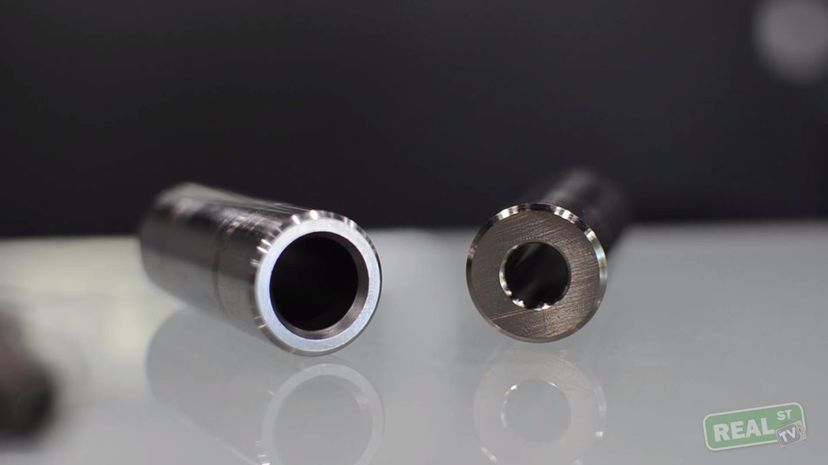
The wrist pins connect the pistons to the connecting rods. They allow the piston to tilt forward and backward as the connecting rod pumps up and down inside the cylinder.
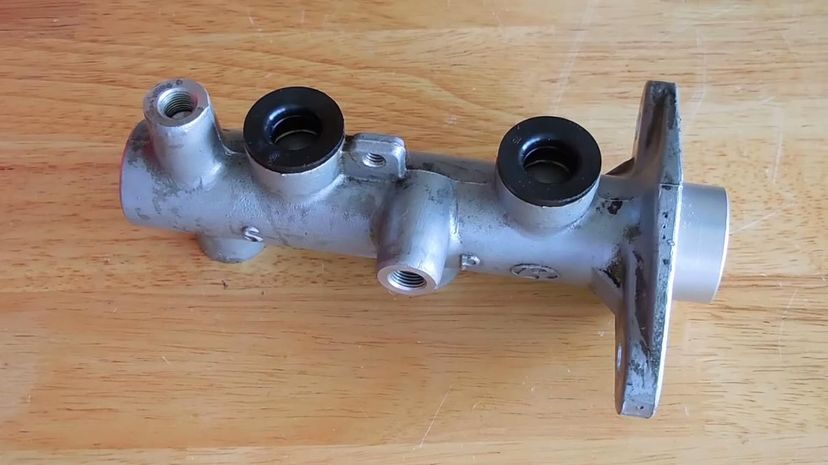
The brake master cylinder bolts to a brake booster, which uses a vacuum to increase the power your brake pedal inputs to stop the vehicle. You can generally find this assembly near the rear driver's side of the engine compartment.
Advertisement
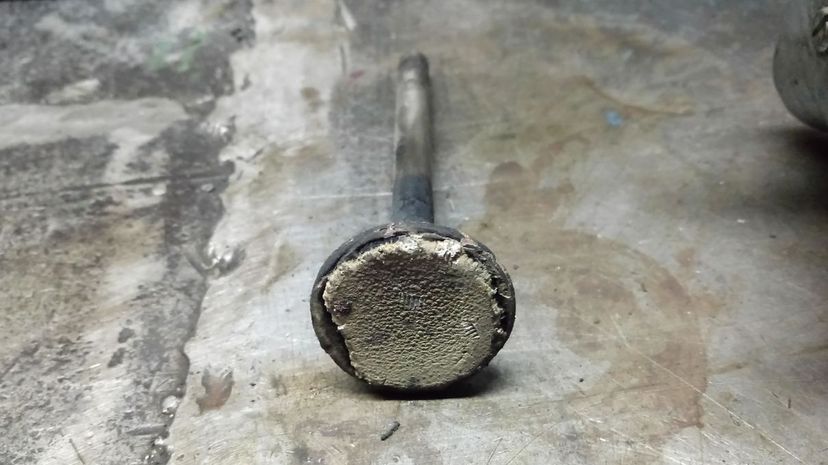
The intake and exhaust valves sit in the cylinder head, but they make a mechanical connection to the camshaft in an overhead-cam engine or the pushrods in an overhead-valve engine. The intake valves allow gas and fuel into the engine, and the exhaust valves allow the fumes from the burned fuel to flow into the exhaust.
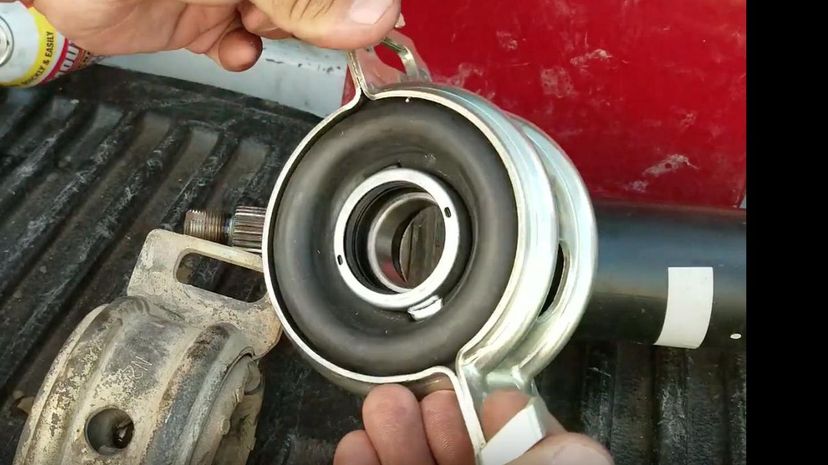
The center support bearing connects to the rough center point of the driveshaft, supporting it and allowing it to rotate freely. When this bearing goes bad, you'll hear a loud grinding noise while driving.

While the wheels do contact the rotors and lug nuts, their physical connection to a vehicle is via the wheel hubs. Always torque wheels to their proper specification to avoid damaging the hubs or their bolts.
Advertisement
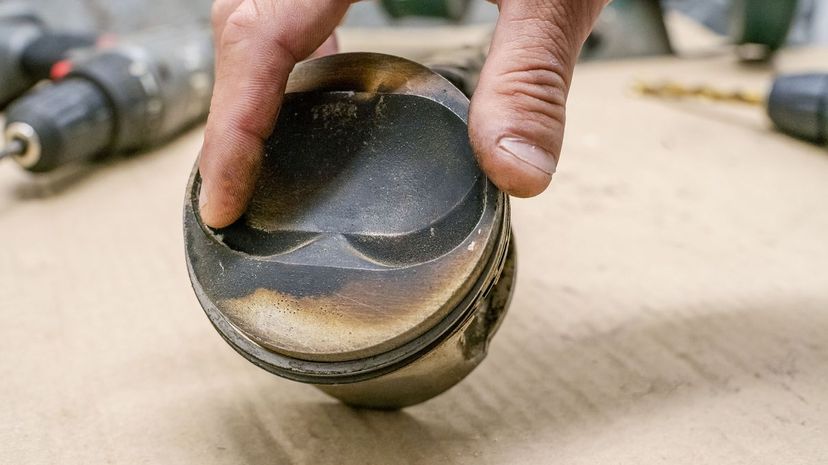
The pistons make their mechanical connection with the connecting rods. The connecting rods transfer the energy created by internal combustion from the pistons to the crankshaft.

The connecting rods form the connection between the pistons and the crankshaft. They transfer the energy from internal combustion to the crankshaft, which helps move the vehicle.
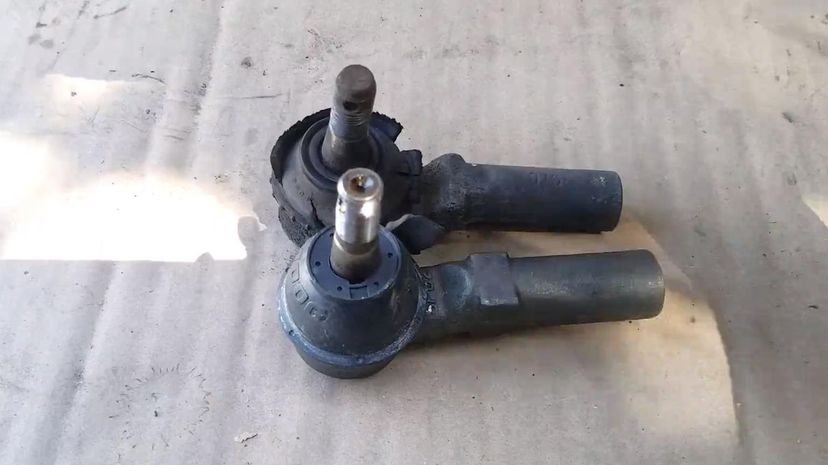
The outer tie-rod end is the outermost steering component before the wheels -- it connects the inner tie-rod end and wheel knuckle. The outer tie-rod end turns the wheels and includes a ball joint for flexibility.
Advertisement
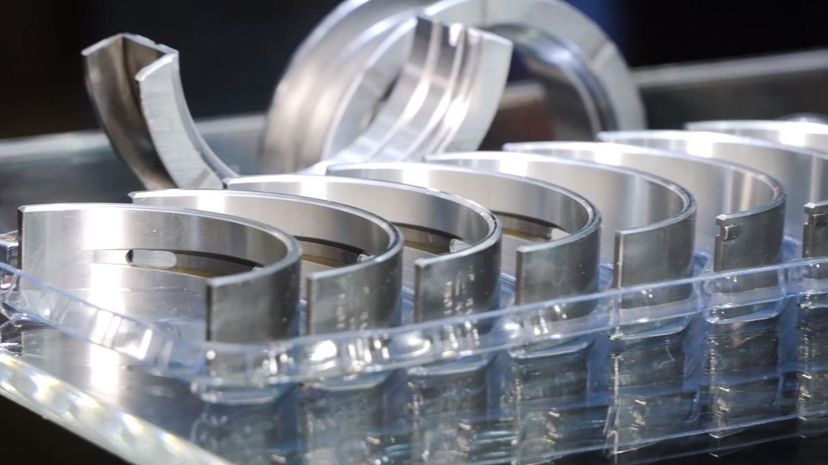
The main bearings connect to the crankshaft and allow it to rotate free of friction in the cylinder block. Without these bearings, the crankshaft would erode and fail over time.
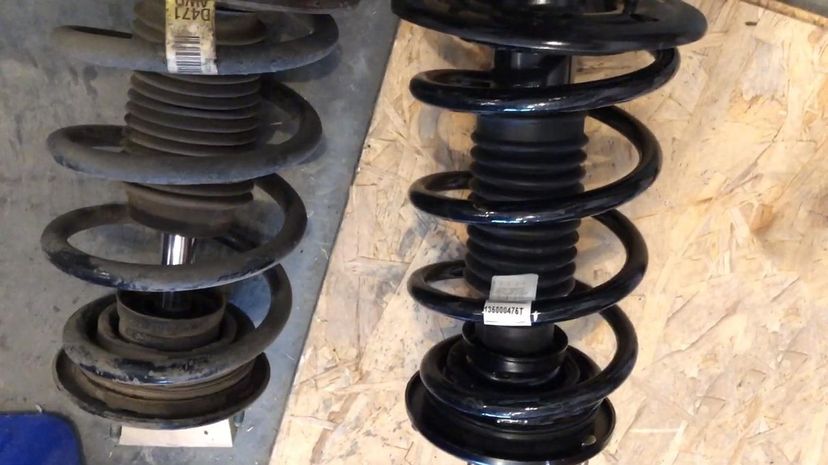
The upper portion of the strut connects to the strut tower in the front fender, and the lower portion of the strut connects to the steering knuckle. The strut twists to allow the vehicle's wheels to turn.
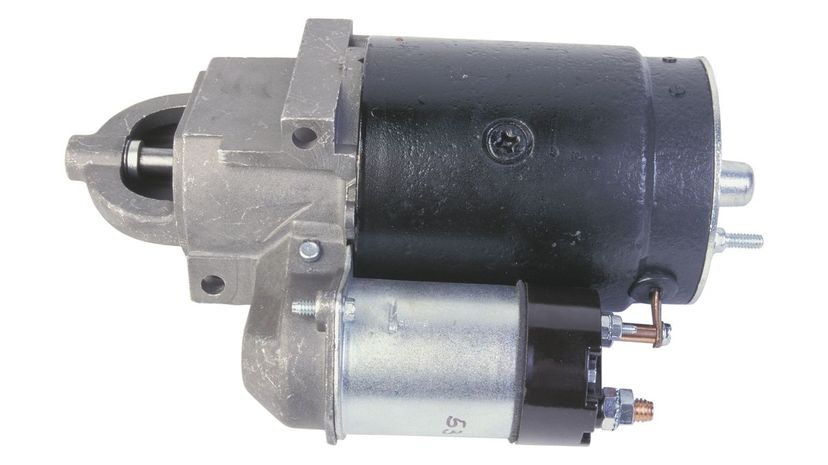
The starter contacts the teeth on the flexplate or flywheel to spin the engine. This spinning helps start the engine.
Advertisement
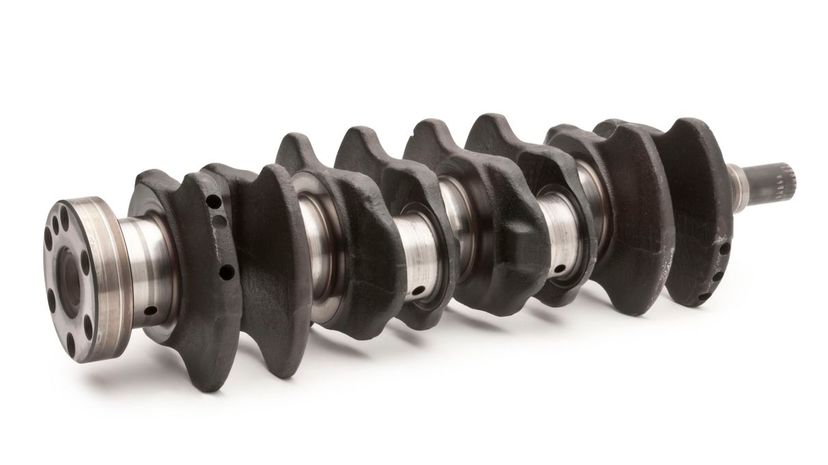
The crankshaft connects to the flywheel or flexplate (varies by vehicle). This is the key connection from the engine to the transmission that drives the vehicle.
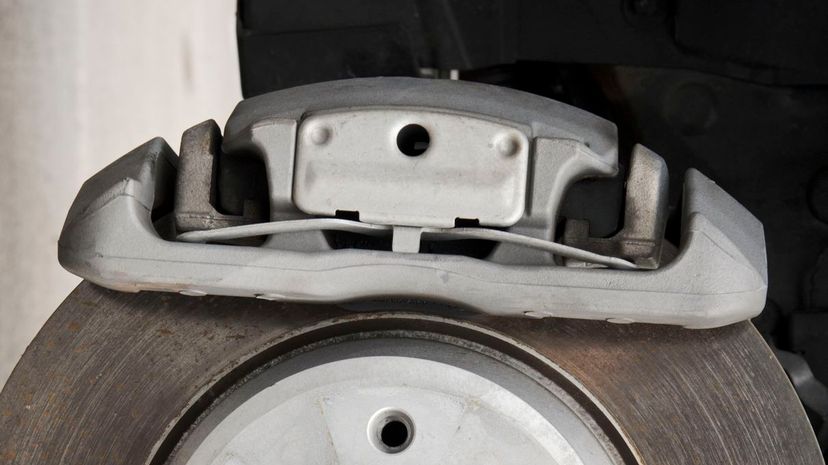
While the caliper does touch the brake rotor, its actual connection point is a bracket that connects to the wheel knuckle. In some cases, the bracket and knuckle are one piece.